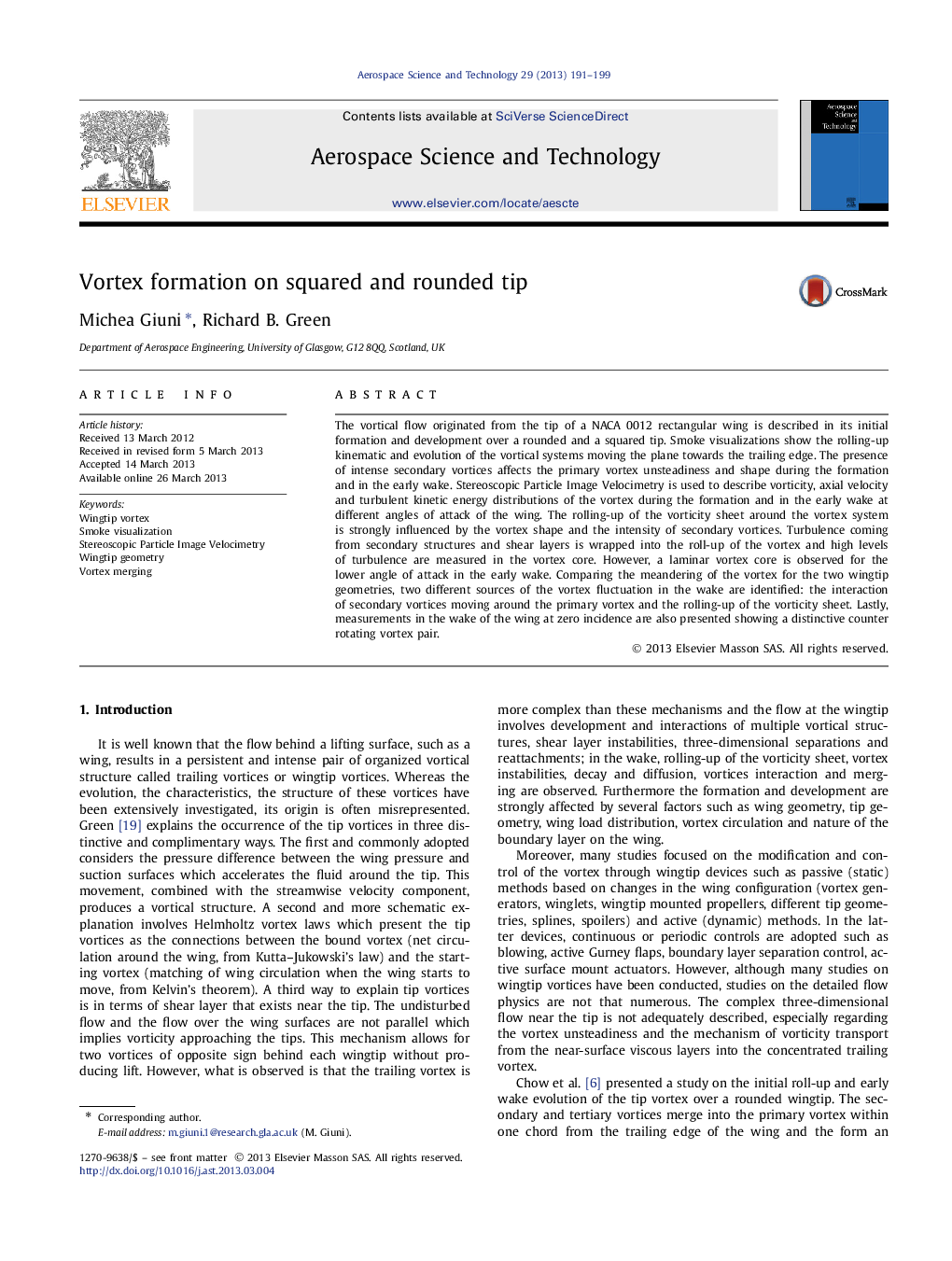| Article ID | Journal | Published Year | Pages | File Type |
|---|---|---|---|---|
| 10681307 | Aerospace Science and Technology | 2013 | 9 Pages |
Abstract
The vortical flow originated from the tip of a NACA 0012 rectangular wing is described in its initial formation and development over a rounded and a squared tip. Smoke visualizations show the rolling-up kinematic and evolution of the vortical systems moving the plane towards the trailing edge. The presence of intense secondary vortices affects the primary vortex unsteadiness and shape during the formation and in the early wake. Stereoscopic Particle Image Velocimetry is used to describe vorticity, axial velocity and turbulent kinetic energy distributions of the vortex during the formation and in the early wake at different angles of attack of the wing. The rolling-up of the vorticity sheet around the vortex system is strongly influenced by the vortex shape and the intensity of secondary vortices. Turbulence coming from secondary structures and shear layers is wrapped into the roll-up of the vortex and high levels of turbulence are measured in the vortex core. However, a laminar vortex core is observed for the lower angle of attack in the early wake. Comparing the meandering of the vortex for the two wingtip geometries, two different sources of the vortex fluctuation in the wake are identified: the interaction of secondary vortices moving around the primary vortex and the rolling-up of the vorticity sheet. Lastly, measurements in the wake of the wing at zero incidence are also presented showing a distinctive counter rotating vortex pair.
Related Topics
Physical Sciences and Engineering
Engineering
Aerospace Engineering
Authors
Michea Giuni, Richard B. Green,
